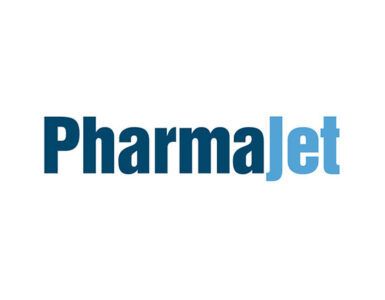
Profound Medical’s (NASDAQ:PROF; TSX:PRN) TULSA procedure was featured in four presentations at the American Urological Association (AUA) annual meeting that reinforced its safety, efficacy and durability, further supporting its potential as a mainstream, whole gland or focal treatment for prostate disease.
“Evidence from clinical-trial and real-world settings establish the precision, flexibility and durability of TULSA treatment, which will complement important Level 1 evidence comparing TULSA to radical prostatectomy from our ongoing randomized controlled CAPTAIN trial,” Arun Menawat, CEO and chairman of Profound, said in a statement.
“We are confident that the positive data shared during these presentations will help to establish TULSA as a mainstream treatment for a broad spectrum of patients with prostate disease, including those with cancer and benign prostatic hyperplasia (BPH), while adding to the momentum of our U.S. commercialization strategy,” he added.
A presentation entitled, “Comparison of postoperative complications between Focal Ablation and Radical Prostatectomy for intermediate-risk prostate cancer,” reviewed the focal ablation against radical prostatectomy (FARP) study led by Oslo University Hospital’s Dr. Eduard Baco.
The study assessed one-year complications in 206 patients, where 131 received treatment with focal ablation, either TULSA or high-intensity focused ultrasound (HIFU), and 75 received treatment with robotic assisted laparoscopic prostatectomy (RALP).
The rate of serious complications was significantly lower in the focal ablation arm at 2% versus 13%. The number of patients incurring any complication after focal ablation and RALP were 20% and 39%, respectively. There were two Grade 4 complications – one after HIFU ablation and one after RALP, but none after TULSA.
“This landmark study is one of the first to establish a head-to-head comparison between radical prostatectomy and minimally invasive therapies,” Dr. Baco said.
“FARP is also the first source of Level 1 evidence that includes TULSA which had lower complications to RALP, and no Grade 4 complications, once again demonstrating the superior safety profile of partial gland ablation.”
Another presentation entitled, “Pivotal study of MRI-guided transurethral ultrasound ablation of localized prostate cancer: 4-year follow up,” reiterated the previously announced four-year follow-up data from the TACT pivotal clinical trial.
The data demonstrate that both oncological control and functional outcomes are durable to four years after treatment with TULSA. At four years, 16% of patients in TACT underwent additional intervention for prostate cancer, with no patients experiencing severe erectile dysfunction, and 87% of previously potent patients reporting erection firmness sufficient for penetration, demonstrating continued improvement from 75% at one year.
Urinary function was durable over the four-year follow-up period, with 99% of patients preserving urinary continence and 94% remaining completely pad-free.
The data was presented by Dr. Christian Pavlovich, Bernard Schwartz distinguished professor in urologic oncology at the Johns Hopkins University School of Medicine and director of the Prostate Cancer Active Surveillance Program and fellowship director of Urologic Oncology for the Brady Urological Institute.
Dr. Rolf Muschter of Bielefeld, Germany’s ALTA Klinik presented, “A retrospective clinical service evaluation of lesion-targeted MRI-guided transurethral ultrasound ablation for the treatment of localized prostate cancer.”
The presentation described a real-world outcomes study of 180 men with primary or recurrent prostate cancer and a subgroup with concurrent BPH who were also seeking treatment for lower urinary tract symptoms (LUTS). At follow-up, oncological success was 88%, with 85% of men with LUTS before treatment experiencing relief after treatment with TULSA. In addition, 98% of patients preserved pad-free continence and 100% preserved erectile potency.
“This real-world outcome study is the largest single cohort presented to date,” Dr. Muschter said. “The compelling results demonstrate that lesion-targeted TULSA is associated with promising mid-term oncological outcomes and a minimal functional side-effect profile, with the flexibility to treat localized prostate cancer in a primary, salvage, or concurrent setting of BPH through a patient-tailored whole-gland or lesion-targeted approach,” he added.
In addition, a presentation entitled, “Transurethral ultrasound ablation for benign prostatic obstruction: 12 months clinical outcomes,” assessed the safety and efficacy of TULSA in men with BPH.
Outcomes for the 27 men treated in the study demonstrated that early symptom relief at three months was durable to 24 months. At 12 months, the International Prostate Symptom Score was four, improved from 17 before treatment, while the quality-of-life score improved to one, from four, before treatment, despite 23 of the 27 men discontinuing symptom-management medication. All measures of urinary symptoms and uroflowmetry improved after the TUSLA procedure.
“These 12-month outcomes strengthen our previously reported results on the safety and efficacy of TULSA as a promising new treatment option for benign prostatic obstruction,” said presenting author, Turku University Hospital’s Dr. Mikael Anttinen.
The abstracts were published in The Journal of Urology: Vol. 209, No. 4S, Supplement, Monday, May 1, 2023.





